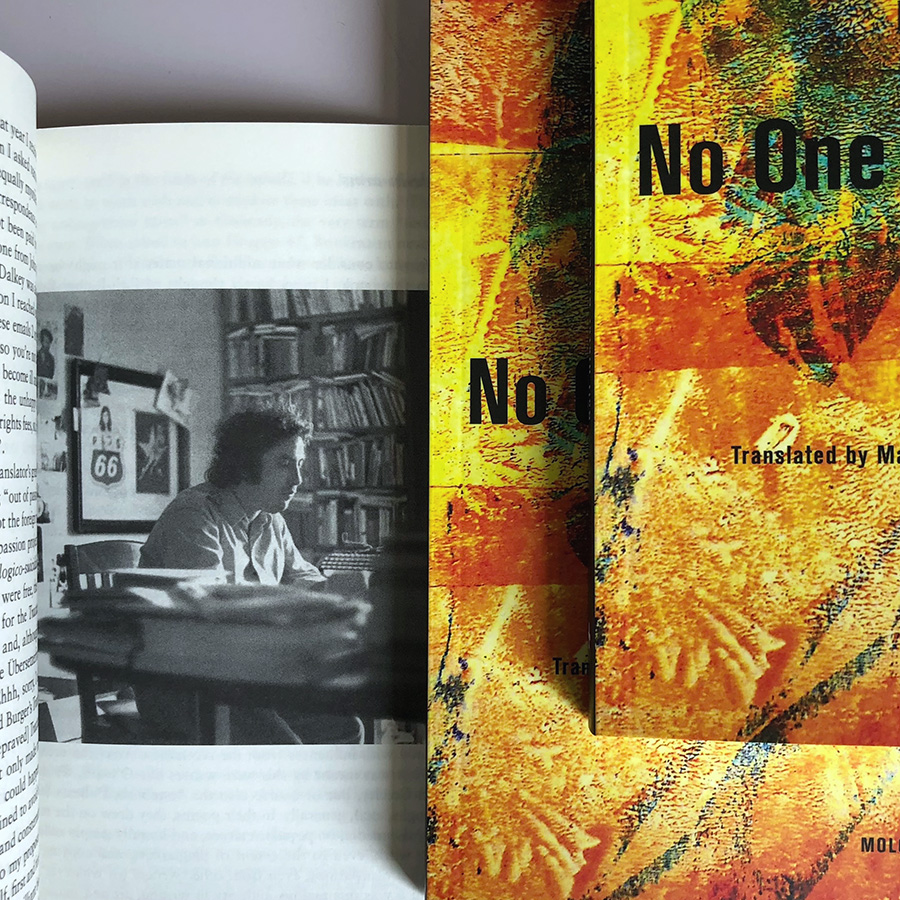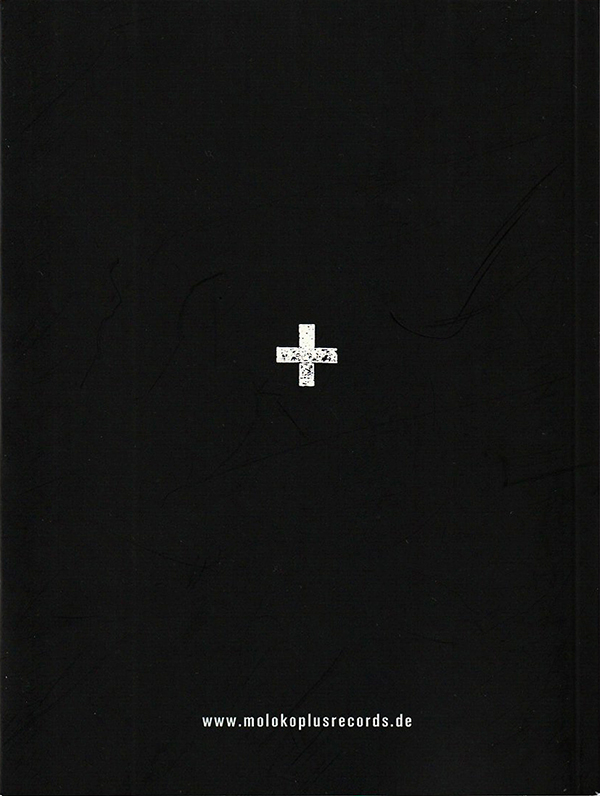Author: Rolf Dieter Brinkmann
Publisher: Moloko Plus, Schönebeck
Year: 2023 (originally published in German, 1968)
Size: 185 x 140 x 12 mm
Pages: 206, perfect bound
Language: English
Translation & postscripts: Mark Kanak
Design: Kai Pohl
Photos: Ulrike Pfeiffer
Artwork: Judith Schwietzke
Postage & packing not included
 Rolf Dieter Brinkmann‘s short life and career came to an abrupt end when he was hit by a car and catapulted into the air on Westbourne Grove, London in 1975. Crossing the road to a pub on the opposite side he had forgotten that people drive on the left in the UK. By that time Brinkmann’s star as a poet, writer, and translator had been rising in Germany and his work had won him both critical acclaim and a fellowship at Villa Massimo in Rome. Brinkmann had visited London many times before. His friend Ralf-Rainer Rygulla had lived there for three years – making a living at Foyles booksellers on Charing Cross Road – and had introduced him to Tony Godwin’s Better Books across the road. Godwin had met Lawrence Ferlinghetti in San Francisco in 1964 and had modelled his Better Books after Ferlinghetti’s City Lights Bookstore. Consequently, in the 1960s Better Books was one of the few places in Europe (together with Barry Miles’s Indica Books) where countercultural literature from the US was available. Both Brinkmann and Rygulla took inspiration from Ted Berrigan, Frank O’Hara, William Carlos Williams, Ed Sanders, Tuli Kupferberg and other American poets, writers and publishers and in 1969 they published German translations of their favourite authors in their influential anthology ACID. Neue amerikanische Szene. But at the turn of the decade Brinkmann withdrew from Germany’s literary scene and concentrated on writing in his apartment in Cologne, where he lived with Maleen Kramer and their son Robert. His poetic opus magnum Westwärts 1 & 2 was written the following years and was awarded the prestigious Petrarca-Preis posthumously in 1975.
Rolf Dieter Brinkmann‘s short life and career came to an abrupt end when he was hit by a car and catapulted into the air on Westbourne Grove, London in 1975. Crossing the road to a pub on the opposite side he had forgotten that people drive on the left in the UK. By that time Brinkmann’s star as a poet, writer, and translator had been rising in Germany and his work had won him both critical acclaim and a fellowship at Villa Massimo in Rome. Brinkmann had visited London many times before. His friend Ralf-Rainer Rygulla had lived there for three years – making a living at Foyles booksellers on Charing Cross Road – and had introduced him to Tony Godwin’s Better Books across the road. Godwin had met Lawrence Ferlinghetti in San Francisco in 1964 and had modelled his Better Books after Ferlinghetti’s City Lights Bookstore. Consequently, in the 1960s Better Books was one of the few places in Europe (together with Barry Miles’s Indica Books) where countercultural literature from the US was available. Both Brinkmann and Rygulla took inspiration from Ted Berrigan, Frank O’Hara, William Carlos Williams, Ed Sanders, Tuli Kupferberg and other American poets, writers and publishers and in 1969 they published German translations of their favourite authors in their influential anthology ACID. Neue amerikanische Szene. But at the turn of the decade Brinkmann withdrew from Germany’s literary scene and concentrated on writing in his apartment in Cologne, where he lived with Maleen Kramer and their son Robert. His poetic opus magnum Westwärts 1 & 2 was written the following years and was awarded the prestigious Petrarca-Preis posthumously in 1975.
Keiner weiß mehr is Brinkmann’s only novel. Moloko Plus has now published the first English translation of this novel (or rather, anti-novel), which counts as one of the most innovative German literary works of the 1960s. According to translator Mark Kanak’s blurb on this beautiful edition No One Knows More ‘offers an insight into the emotionally-fraught marital and personal lives (and thoughts) of a nameless couple and their child in late 1960s Cologne. The text, which graphically recounts the protagonist’s travails in an at times obsessive hypnotic inner monologue, was considered groundbreaking for its time in German-speaking literature. First published in 1968, the book remains a unique linguistic milestone, for which adjectives such as “obscene,” “brutal,” and “brilliant” were frequently bandied about in reviews when describing the meticulous rendering of the (mis- and non-) adventures of a man who at every step is incessantly questioning the world about him.’


